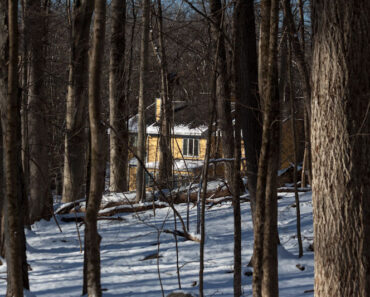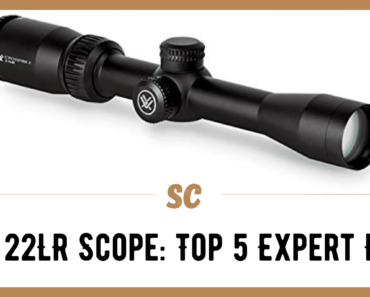What are the survivalist’s basic tools? Where does the toolkit end and equipment begin? That is a tough call if you took a few anthropology classes, but I will try stick to tools in the traditional sense.
Fixed Blade Knife
A fixed blade knife is the survivalist’s companion and can deal with camp chores, cutting, and preparing food. Some fixed blade knives also serve as ferro striker and bow drill bearing block. There is no one perfect survival knife because knives built for woodwork are not ideal for hunting and vice versa.
In fact, hunters who tan hides usually use more than one knife for the various chores of field dressing, quartering, caping, skinning, de-fleshing, butchering, and so on, not to mention processing small game and fish.
The survivalist living out of his pack cannot carry the ideal tool for each job and must make do with a few generalist tools and improvise specialist tools as needed. George W. Sears, better known as “Nessmuk”, carried his namesake hunting knife, a folding knife with clip point and spear point blades, and a double bitted hatchet. (Sears, 1900) The survivalist going hunting from his homestead can carry more specialist tools.
Machete, Axe or Hatchet
Although larger and heavier than a knife, a chopping tool often saves work. The type of chopping tool carried, or whether one is carried at all, should be determined by the environment. Generally, I use whatever tool the locals use. As David Holliday once put it, “You can bypass thirty thousand years of human development by learning from the locals.”
In the southwest desert, a chopping tool might not be necessary, but you might carry a machete because they are fun. In tropical regions, any of a dozen machete designs have been adapted to survival chores specific to each biome. In the Eastern U.S., you might get by just fine with a hatchet. In the north, an axe is more effective for working with trees, getting at dry tinder, and chopping holes in the ice to fish. An ice chisel would the right tool for the job, but it is a specialist tool, meaning it is only good for one thing. To earn a place on a survivalist’s belt or in his pack, tools should be multiuse. A decent hammer poll tomahawk can skin and flesh hides, quarter big game, cut poles for shelter, split wood for a fire, drive pegs, and chop fishing holes in ice.
File, Sharpening Stone, Hone, Strop & Oil
Abrasive tools and oil keep edged tools sharp and rust-free. The file is used for repairing the edge of axes and machetes and stock removal. Sharpening stones put a useful edge on tools. Honing stones refine and polish the edge, and stropping brings the edge to a hair-popping, near-mirror finish.
A file, a two-sided sharpening stone and hone, and a leather belt might find their way into backpack, but a 4” two-sided, medium/fine stone is sufficient to maintain a knife in the field.
Crooked Knife
The crooked knife serves as both a drawknife and a hooked blade to carve out convex channels or surfaces such as spoons, bowls, blowguns, and gutters without having to laboriously burn them out with coals.
Sewing Kit
Needles and sewing awls are needed for sewing. While some of these tools might seem crazy simple, in the present, it can be difficult to appreciate the impact of a tool like the sewing needle and what it has done for mankind. Without it, our ancestors could not have sewn properly fitting clothing, to survive the ice age in northern Europe.
The survivalist uses needles and thread to maintain clothing, footwear, and packs and to sew new clothing and resole footwear as they wear out. The sewing kit is also used to adapt the survivalist’s gear to meet the challenges he faces.
Sewing needles should feature large eyes to they can be used with coarse natural fibers, sinew, and catgut. Large sail needles can also be used as a marlinspike to untie knots or as a fid to splice braided rope. A sewing kit should also include a quality pair of small, pointed scissors, waxed, and unwaxed thread, a few buttons, a small tube of Shoe Goo flexible adhesive for footwear repair, and a bobby pin or cotter pin sized to re-thread draw cords.
Multitool, Swiss Army Knife, Scout Knife, or Small Tools Kit
The survivalist can also benefit from a multitool, Swiss Army knife, scout knife, or small tool kit with an awl, can opener, and screwdrivers at a minimum. A pair of pliers is nice to have in cactus country.
Small saws for metal and wood can be included here, as can gun cleaning equipment that may be required depending on your choice of firearms, but depending on what you carry, you might be able to make do with boot laces and motor oil or machine oil.
I also like to include a magnifying glass.
Saw
Saws are quieter, lighter, and safer than chopping tools. In fact, saw blades are so light that most survivalists carry both a chopping tool and one or more saws blades.
I covered which saw blades I find most useful in the article on the small tool kit, but bone saws are useful for quartering and butchering big game, wood saws are great at cutting deadfall trap triggers, and metal saws are useful for destructive entry if you run into a padlock that you can’t pick or bypass in a reasonable amount of time.
Shovel
I carry a trowel for cat holes, working with coals, removing rocks from my bed, and digging roots and tubers so I don’t have to make digging sticks. I also carry a snow shovel in winter, which is useful in the north and areas with high mountains.
Repair Kit
A repair kit is not a tool, but it may contain tools. An individual repair kit can be as simple as a small tool kit, sewing kit, duct tape, and wire.
A group tool kit should be able repair and maintain tools, packs, shelter poles, firearms, fabric, footwear, leather goods, sleeping pads, eyeglasses, zippers, buckles, and so on.
This is probably a good segue into individual tools vs group tools.
Group vs Individual Tools
Traveling alone versus in a group should affect tool selection.
In a group, each individual who is responsible enough, should carry their own fixed blade knife and perhaps a small multitool or Swiss Army knife, but group tools can be distributed amongst the group. For example, a group of 8 people doesn’t need 8 axes, 8 flat files, 8 sharpening pucks, 8 shovels, and so on. I’m sure you can imagine how much extra weight the group would carry if they didn’t plan as a group. They only need one, maybe two of those tools. Most of the time they are just going to be dead weight in people’s packs.
Personal survival gear changes with different environments. In a jungle, each person should carry a machete because it would be difficult to survive without it. In forested regions of Canada or Alaska, each person might carry a light axe for the same reason and in extreme cold weather, each person should have some type of snow shovel. So, there are exceptions, but a group can generally save themselves carrying a lot of extra weight.
There is also a lot of group gear in addition to tools, but here is a list of some of the specialized tools that can be carried by a group.
- Entry Kit – Each person might carry a little bit of restraint escape gear including a tiny set of lock picks for E&E scenarios, but a group doesn’t need half a dozen entry kits.
- Axe
- Pick/Mattocks
- Pry Bar
- Shovel
- Back Country Block & Tackle – Carabiners, tubular webbing, and prusik cord or tech cord. Useful for hoisting big game for processing, lifting heavy objects.
- Sharpening Kit
- Repair Kit
- Gun Cleaning Kit
- Improvised Munitions/EOD Kit
- Field Reloading Kit
- Grain Mill – Grain Mills can be improvised from stone or pipe, but a small hand-cranked grain mill fits in a backpack and would be worth its weight by simplifying the making of flour in areas where seeds are available that can be ground into flour. This could be from wild edibles such as mesquite beans and saguaro seeds or rural areas where crops like corn and wheat can be grown or gleaned. It would also prevent the destruction of tooth enamel that comes from eating stone-ground flour ground on primitive grinding stones.
Notably, bomber Eric Rudolph evaded the FBI for years by living in the wilderness and stealing many hundreds of pounds of grain from silos and raiding gardens. (FBI, 2005) If he’d brought a grain grinder, maybe he’d still be hiding somewhere. The monotonous diet was ultimately what got him caught when he went dumpster diving in search of a more varied diet.
Works Cited
FBI. (2005, May 05). The Pursuit and Capture of Eric Ruldolph Part 2. Retrieved from archives.fbi.gov: https://archives.fbi.gov/archives/news/stories/2005/may/swecker_051805
Sears, G. W. (1900). Woodcraft and Camping. New York: Forest and Stream Publishing Co.




























